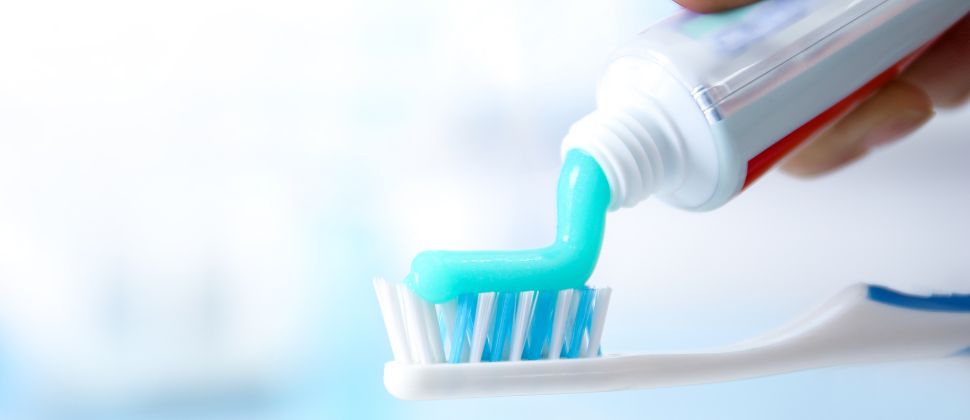Beyond just having white teeth, maintaining a healthy smile is crucial for general well-being. Cavities, gum disease, and poor breath are just a few of the dental problems that can be avoided with good oral care. While brushing and flossing are common procedures, there are a number of other routines and methods that can support good tooth health. We’ll go over eight recommended practices for healthy teeth in this post, giving you insightful advice and useful pointers to help you maintain strong, gorgeous teeth and a self-assured, bright smile for the rest of your life. You may actively protect your oral health and achieve a long-lasting, radiant smile by implementing these habits into your everyday routine.
1. Brush your Teeth Twice a Day

A healthy oral care regimen is built on the fundamental practice of brushing your teeth twice a day. Brushing your teeth thoroughly and frequently can help prevent plaque accumulation, a sticky film of germs that collects on the surfaces of your teeth. The bacteria and plaque that have accumulated overnight are removed when you brush your teeth in the morning. By doing this, you can improve your breath and get your teeth ready for the day. Brushing your teeth before bed is equally important since it gets rid of the food particles and bacteria that have accumulated during the day, keeping your mouth clean while you sleep. To effectively brush your teeth, use a soft-bristled toothbrush. Soft bristles are gentle on your gums and tooth enamel, minimizing the risk of damage.
Choose a fluoride-containing toothpaste. The mineral fluoride makes the enamel stronger, increasing your teeth’s resistance to acid assaults and tooth decay. Use your toothbrush and a pea-sized amount of toothpaste to gently brush in a circular motion. Make careful to clean the chewing, inner, and exterior surfaces of all of your teeth. Remember to brush your tongue as well because it may contain bacteria that cause bad breath. Spend at least two minutes brushing slowly and carefully to get a complete cleaning. Spending equal amounts of time on each quadrant of your mouth may be useful. Be gentle but thorough, paying special attention to the gum line and difficult-to-reach molars.
2. Floss Daily

Flossing is a crucial part of an effective oral hygiene regimen. While brushing can thoroughly clean your teeth’s surfaces, it frequently can’t get into the small gaps in between them. When you floss, you can get rid of plaque, bacteria, and food fragments from these challenging places. You may greatly lower your risk of developing cavities, gum disease, and other oral health issues by flossing every day. Plaque between the teeth that aren’t eliminated by brushing or flossing can solidify into tartar, which can only be removed by a professional dentist. This accumulation of plaque and tartar can cause gingivitis or worsening periodontal disease by inflaming the gums.
Take a piece of dental floss that is about 18 inches long and begin to floss properly. A few inches of floss are left after wrapping the majority of it around your middle fingers. To gently slide the floss between your teeth, move it back and forth while holding it firmly between your thumbs and index fingers. Each tooth should have the floss wrapped around it in a C shape, moving up and down against the tooth’s side and slightly below the gum line. Avoid snapping the floss into your gums as this can irritate them. Use a fresh piece of floss for each tooth as you proceed along your dental arch to prevent the spread of bacteria. The rear teeth should receive special attention because they are frequently ignored and prone to plaque development. Water flossers and floss picks are great substitutes for traditional flossing if you find it difficult or uncomfortable to do so.
3. Use Fluoride Toothpaste

Maintaining healthy teeth and preventing tooth decay requires the use of fluoride toothpaste. The outer protective coating of your teeth, called tooth enamel, can be strengthened by the natural mineral fluoride. Strong dental enamel is more resistant to acid assaults brought on by bacteria and acids from food and beverages. When plaque bacteria break down glucose, they form acids that gradually erode tooth enamel, causing tooth decay. Fluoride, on the other hand, aids in the remineralization and repair of deficient enamel, avoiding the emergence of cavities. Look for a toothpaste that has fluoride while making your selection. Fluoride is a common active component in commercial toothpaste.
The American Dental Association (ADA) advises using fluoride-containing toothpaste to give your teeth the best possible defense against decay. It’s easy to use fluoride toothpaste. Use a pea-sized dab of toothpaste on your toothbrush to give your teeth a thorough, all-over brushing. Make sure to clean the gum line and the rear teeth. Avoid rinsing right away after brushing since fluoride toothpaste works best when it has had time to come in contact with your teeth. Instead, spit out the extra foam. It’s important to note that toothpaste contains a safe level of fluoride for regular use. Use a pea-sized amount of toothpaste for youngsters aged three to six, and only a smear for those under the age of three. This lessens the chance of consuming too much fluoride.
4. Maintain a Balanced Diet

For the promotion of ideal dental health as well as overall health, a balanced diet is essential. The health of our teeth and gums is significantly influenced by what we consume. We can avoid oral health problems like tooth decay, gum disease, and others by making informed food decisions. Limiting the intake of sugary and acidic meals is one of the most important factors to take into account when it comes to diet and oral health. Oral bacteria love sugary meals and drinks like candy, cookies, sodas, and fruit juices. In order to produce acids that attack tooth enamel and cause cavities and tooth decay, these bacteria feed on the sugars. Acidic foods and beverages, such as tomatoes, citrus fruits, and carbonated beverages, can also gradually erode tooth enamel. It’s critical to include a variety of tooth-friendly foods in your diet to offset the possible harm that sugary and acidic foods may cause. Your meal planning should prioritize fruits and vegetables.
These foods are nutrient-dense and not only offer vital vitamins and minerals, but they also have significant fiber content, which aids in normal digestion and preserves gum health. Apples, carrots, and celery are just a few examples of crunchy foods that can help keep your teeth clean naturally by promoting saliva production and mechanically eliminating plaque. Another crucial element of a diet that is good for your teeth is whole grains, such as whole wheat bread, brown rice, and whole grain cereals.
Whole grains maintain their natural fiber, vitamins, and minerals, unlike their refined counterparts. These nutrients are essential for preserving strong teeth and healthy gum tissue. Your oral health will also benefit from eating more lean proteins. The gums and other oral tissues can be repaired and maintained with the help of foods like lean meats, poultry, fish, eggs, and legumes.
5. Limit Sugary and Acidic Drinks

For oral health to remain at its best, drinking less sugar- and acid-containing beverages is essential. Acids and sugars found in large quantities in drinks like soda, energy drinks, and fruit juices can do serious damage to your teeth. Drinks with added sugar are a feast for the oral bacteria that turn sugar into acids. These acids eat away at the tooth enamel, eventually causing cavities and tooth decay. On the other hand, acidic beverages can directly erode tooth enamel, reducing the barrier that protects your teeth. Drinks high in sugar and acid should be consumed sparingly in order to protect your teeth from their damaging effects. When feasible, use healthier options like water, herbal tea, or unsweetened beverages.
If you do consume sugary or acidic beverages, there are several methods you can use to lessen their negative effects on your teeth. When consuming these beverages, using a straw is a useful strategy. You may minimize the amount of liquid that comes into touch with your teeth by placing the straw towards the back of your mouth, which will lessen the exposure to damaging sugars and acids. After ingesting sugary or acidic drinks, rinsing your mouth with water is another beneficial habit. By removing any remaining sugars and acids from your mouth with a water swish, you can create a healthier dental environment. It also aids in balancing the pH in your mouth by neutralizing the acids. However, it’s important to note that rinsing with water is not a substitute for brushing your teeth.
6. Stay Hydrated

A key component of maintaining good affordable dental health is staying hydrated. While we frequently pay attention to how food and drink affect our teeth, water also plays an important role. Drinking enough water throughout the day has many advantages for your oral health in addition to your general health. Water functions as a natural mouthwash, aiding in the removal of food particles and other waste that can build up on your teeth and gums. This is especially crucial after meals or snacks since leftover food can stick to the surfaces of your teeth and serve as a haven for bacteria. You may flush these particles away by drinking water, which lowers your chance of developing plaque and dental decay.
In addition to its cleansing abilities, water is essential in encouraging the production of saliva. Maintaining a healthy mouth environment requires saliva. It aids in balancing oral acids, remineralizing tooth enamel, and combating the germs that can lead to cavities and gum disease. Saliva production is maximized when your mouth is properly hydrated, acting as a natural defense against problems with oral health. Additionally, water aids in the prevention of dry mouth, a condition marked by a decrease in salivation. A dry mouth can cause discomfort, make it harder to speak and swallow, and raise your risk of developing dental issues. You may lessen the likelihood of developing a dry mouth by maintaining sufficient hydration, which will keep your mouth moisturized and lubricated.
7. Avoid Tobacco Products

It’s imperative to abstain from tobacco products for both oral and general health. Your oral cavity can suffer severe and harmful repercussions if you smoke or use tobacco in any other way. An increased risk of gum disease, commonly known as periodontal disease, is one of the most important dangers connected to tobacco use. Smoking impairs immunity, making it more difficult for the body to fight off illnesses. Additionally, it reduces blood flow to the gums, preventing them from healing correctly. Smokers consequently have a larger risk of developing gum disease, suffering from more severe symptoms, and losing their teeth.
Additionally, smoking tobacco greatly raises the risk of acquiring mouth cancer. Most oral cancers, including those of the lips, tongue, cheeks, and throat, are brought on by smoking. Oral cancer is also a serious concern when using smokeless tobacco products like chewing tobacco or snuff. These malignancies have the potential to be fatal and may necessitate intensive medical care, such as surgery, radiation, and chemotherapy. Halitosis, sometimes known as bad breath, is another typical side effect of smoking. Even after brushing or using mouthwash, using tobacco products or smoking leaves a distinct and disagreeable odor in the mouth. Your connections and confidence may be impacted by this, which can cause social and personal discomfort.
8. Visit your Dentist Regularly

Regular dental visits are essential to maintaining excellent oral health. The important preventative treatment, inspections, and early diagnosis of any dental issues are provided by these regular checkups and cleanings. While it is typically advised to see your dentist at least twice a year, the frequency may change depending on personal needs and oral health issues. Your dentist can evaluate the general condition of your teeth, gums, and oral structures thanks to these regular visits. They can spot any emerging problems and take care of them before they become bigger difficulties. Dental prophylaxis, commonly referred to as professional cleaning, is normally carried out at your dental appointment. This cleaning goes above and beyond what you can accomplish at home with routine brushing and flossing.
Plaque and tartar accumulation, which can lead to tooth damage, gum disease, and foul breath, will be eliminated by the dental hygienist. Additionally, they will polish your teeth to get rid of surface stains, leaving you feeling clean and renewed. For spotting oral issues in their earliest stages, routine dental exams are essential. Your dentist will do a complete oral examination, looking for indications of tooth decay, gum disease, oral cancer, and other problems with your oral health. To get a more thorough understanding of your oral structures and to identify any potential issues that are not immediately apparent to the naked eye, X-rays may be obtained.
Conclusion
For optimal oral health, adopting these nine best practices for healthy teeth is crucial. You may successfully eliminate plaque, stop tooth decay, and strengthen tooth enamel by brushing your teeth twice a day, flossing once per day, and using fluoride toothpaste. Last but not least, routine dental appointments allow for expert cleanings, in-depth examinations, and early recognition of dental concerns. You can obtain and keep a healthy smile for many years by adopting these best practices into your everyday routine and getting expert dental care. Keep in mind that oral health is essential for overall wellness.
Recommended:
- Finding the Best Dentists in Melbourne: A Comprehensive Guide
- Expert Recommendations: The Best Dentists in Geelong
- 5 Factors to Consider When Choosing the Best Dentist in Perth



